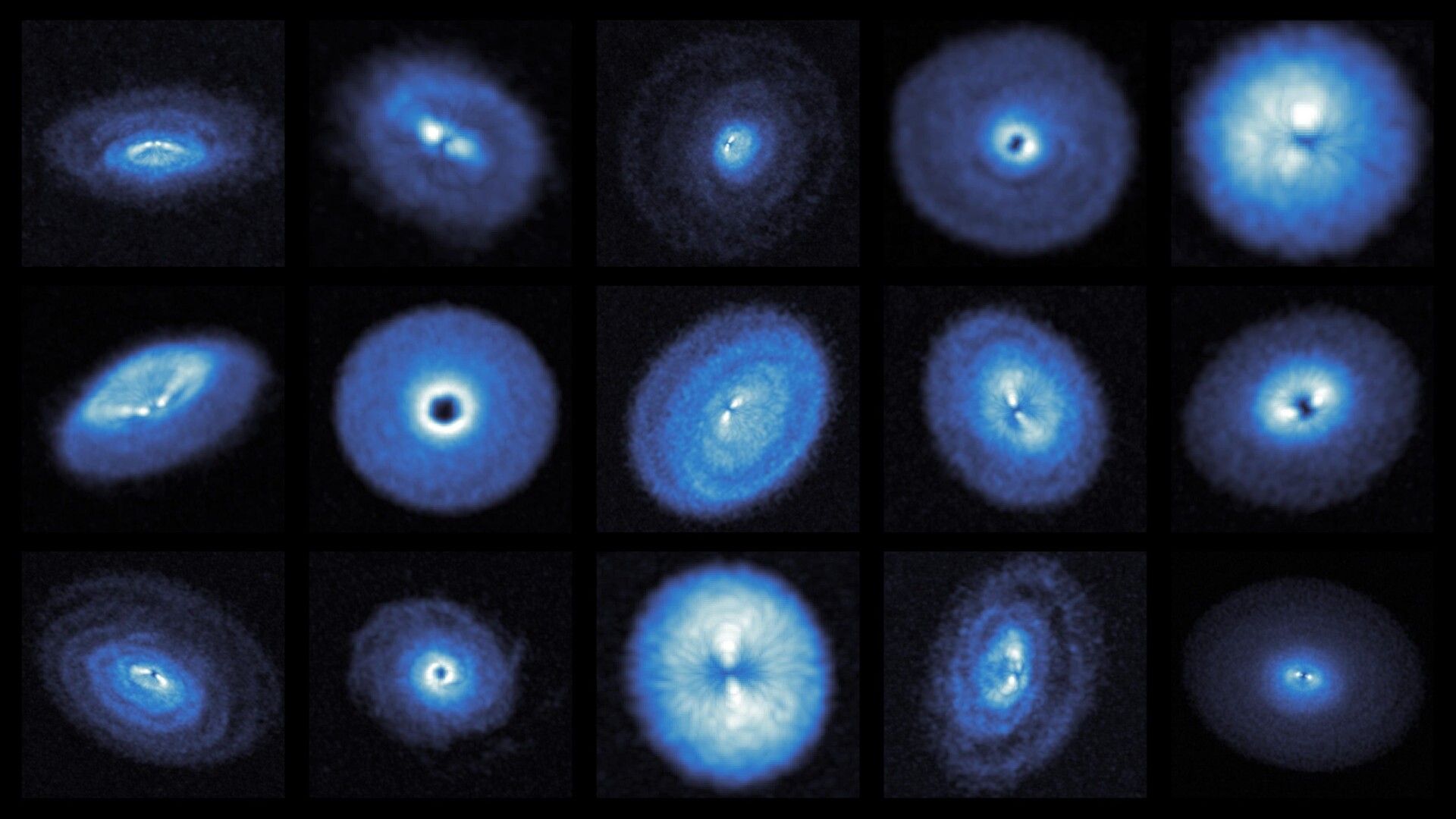🪐 Why do planets have an inclined orbit? A first answer!
Follow us on Google News (click on ☆)
These deformations, or warps, challenge the idea of perfectly flat disks. Andrew Winter emphasizes that this changes our understanding of planetary formation. Possible causes include gravitational forces or chaotic interactions, and the disordered structure influences how planets form and migrate.

Protoplanetary disks studied by exoALMA, showing deformations in carbon monoxide light.
Credit: Richard Teague and the exoALMA collaboration
The similarities with our Solar System are striking. The orbital inclinations of planets, like Earth's 7.25 degrees, resemble these warps. Winter suggests this could be a universal consequence of stellar formation.
The implications for simulations are significant; theorists can now integrate these deformations into their models. This could explain observed spiral patterns or temperature variations. These discoveries pave the way for future research; understanding warps helps grasp how planets acquire their final orbits.
The study is published in The Astrophysical Journal Letters.
What is a protoplanetary disk?
A protoplanetary disk is a structure of gas and dust surrounding a young star. It forms from the molecular cloud that collapses to give birth to the star. The material flattens into a rotating disk due to the conservation of angular momentum.
In this disk, dust particles gradually aggregate to form planetesimals, then protoplanets. This process can take several million years. The composition varies, including elements such as hydrogen, helium, and carbon compounds.
Protoplanetary disks are observable in star-forming regions, such as nebulae. Their study helps understand the diversity of planetary systems. Instruments like ALMA allow mapping their structure with unprecedented precision.
How does the Doppler shift work in astronomy?
The Doppler shift is a physical phenomenon where the frequency of a wave changes depending on the relative motion of the source and the observer. In astronomy, it is used to measure the radial velocities of celestial objects. For light, a shift toward blue indicates approach, toward red indicates recession.
In the case of protoplanetary disks, astronomers analyze light emitted by molecules such as carbon monoxide. By measuring changes in wavelength, they deduce the velocities and directions of the gas. This reveals details about the dynamics and structure of the disk.
This technique is important for studying subtle phenomena, such as the warps described in the article. It allows quantifying inclinations of just a few degrees, providing data on planetary formation processes.